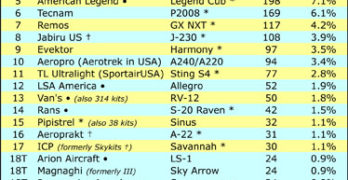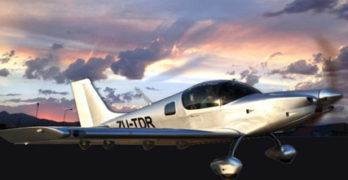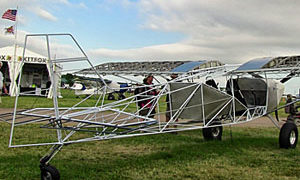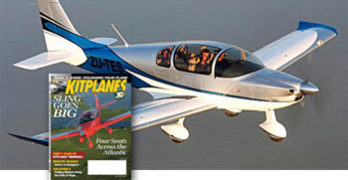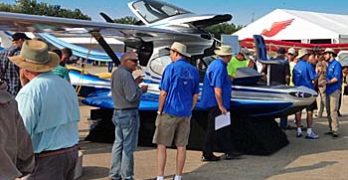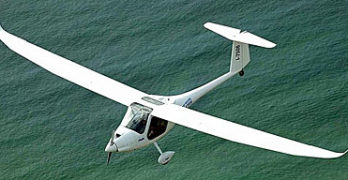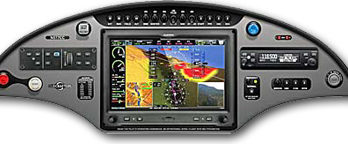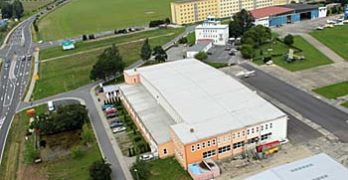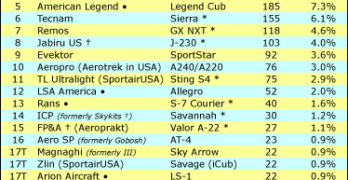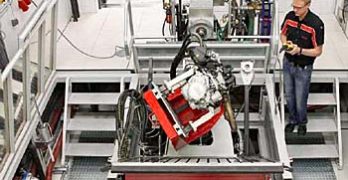As spring approaches and with major airshows like Aero Friedrichshafen in Germany and Sun ‘n Fun in Florida about to trigger a new season of recreational flying, it is time for an annual update of Light-Sport Aircraft market shares. Our well-known “fleet” chart appears nearby; this table refers to all Special LSA registered with FAA in the United States since the first aircraft was accepted by FAA almost ten years ago (on April 5, 2005).
We again post our Calendar 2014 tally that shows the success only in that year as a means of drawing attention to those brands and models performing the best in the last twelve months. We remind you that these charts use as their source the FAA registration (N-number) database, that is then carefully studied and corrected to make the most reliable report possible. However, two points: (1) this report will still have some errors as the database on which we rely has some faulty information … though we believe this to be modest and, as noted, we correct it where we can; and, (2) aircraft registrations are not likely to be perfectly in sync with company records of sales for a variety of reasons.
Search Results for : Pipistrel
Not finding exactly what you expected? Try our advanced search option.
Select a manufacturer to go straight to all our content about that manufacturer.
Select an aircraft model to go straight to all our content about that model.
LSA Taildraggers Broaden the Sector’s Appeal
Taildraggers may be among the least understood and most feared aircraft available in the LSA space … or for that matter throughout general aviation. While we have many good choices that I’ll list below, I have nonetheless heard from many readers or airshow visitors that they are uncertain about their operation of an aircraft that has no nosewheel. If you have no taildragger skills, you’ll also find it a challenge to get proper flight instruction in a “standard” aircraft. For those seeking new skills in flying, however, taildraggers may provide high satisfaction. Most who have crossed the barrier to taildragging subsequently look very fondly at such aircraft, seeing a sleeker yet gutsier, more rugged appearance. Of course, nosewheels dominate general aviation as they can be easier to land, especially in crosswinds, but once you learn the lesson of “happy feet” — or keeping your feet active on the rudder pedals throughout approach and touchdown — you may always yearn for more taildragger time.
Post-Oshkosh 2013 Quick Review
At the big show EAA likes to call the Summer Celebration of Flight, we rove the grounds seeking new airplanes, new engines or propulsion systems, new panel gear, updated models and more. In this very fast tour, we’ll zoom around AirVenture for a glance at some airplanes and components that caught our attention. In subsequent posts we’ll delve a bit more deeply into certain ideas we thought were novel. All photos accompanying this article are courtesy of Light Sport and Ultralight Flyer, producer of the 300+ videos you can find on this website.
Rans showed off their new S-20 Raven. Those who thought designer and company boss Randy Schlitter got stuck on S-19 were wrong (it’s never wise to think he’s done designing). His new Raven combines elements of the S-6 and S-7, namely the side-by-side seating of the S-6, with the welded spaceframe and superwide door of the S-7.
Is This the “New GA?” … LSA Four Seaters
Something of a stealth invasion is beginning. I refer to an emerging flock of four seat Light-Sport Aircraft. Of course, most readers are aware that no such birds exist as LSA (in the FAA’s code, anyway). By U.S. regulation Light-Sport are two seat aircraft. Other nations have some different ideas. For now, suffice it to say the “LSA 4s” — as I choose to call them for this article — are on final. In the past I’ve written about Evektor’s Cobra, one of the first in this group, arriving so early that you probably would not call it a “LSA-like” airplane. The southern Czech company enjoyed success with their SportStar and Harmony, smaller siblings to a four seater they flew several years ago. After Evektor (coincidentally also the very first LSA to be approved), we began to hear about Flight Design’s C4 modeled on their LSA market-leading CT series.
Post-AirVenture 2014 News Review
Summer’s big show is over and most aviation business folks are back home having that love/hate affair with email that piled up while we worked the event. On whole, the success story is strong. Airplanes sold, crowds were good, accidents were few, and the weather was not smoking hot like it has been in years past (though brief rain showers kept folks dashing for cover on occasion). EAA says attendance was up from last year, that the numbers of airplanes was higher, and that campgrounds reached capacity by midweek. EAA’s special 10th Anniversary of Sport Pilot/Light-Sport Aircraft Exhibit drew well all week with 17 aircraft representing all sectors within the SP/LSA space. Visitors could hardly miss the wonderfully central space AirVenture planners offered for this one-year display. With the front corners presenting a bright green Van’s RV-12 plus the freshly debuted MVP seaplane attendees were practically compelled to wander the space and see all the flying machines.
2013 Light-Sport Market Share Report & Analysis
UPDATE: May 27, 2014 — “A vigorous debate ensued …” might be one way to refer to a four-way discussion from around the globe. Over the last few days, LSA industry folks in distant lands worked on market share details. Michael Coates is the Australian-based U.S. distributor for Pipistrel, an aircraft fabricated in Slovenia and assembled as a LSA in nearby Italy for shipment to the USA. My Czech-based associate, Jan Fridrich, was in China again because his country works with that nation as they build a personal aviation sector virtually from scratch. From our corners of the world we tried to resolve a problem that regularly occurs in our study of the FAA registration database. Pipistrel maintained their SLSA airplane numbers were stronger. Jan and I communicated and finally agreed that we were underreporting their numbers. The chart below has been modified to reflect a truer situation, sharply moving Pipistrel upward from 20th to 14th rank.
Garmin Goes Touch with New G3X Avionics
For a billion-dollar, publicly-listed company Garmin (stock symbol: GRMN) has repeatedly displayed the nimbleness of a start-up enterprise. As if to prove this point Garmin announced several new products for the start of Sun ‘n Fun. And for those of us who need some introduction to these new gee-whiz gizmos, the company has a seminar tent just north of Hangar D where you can learn it all from the experts. No wonder Garmin remains one of the most trusted names in aviation. (My trusty auto Garmin will be leading me around the winding roads of Europe as we head over to Aero immediately following Sun ‘n Fun.) So … G3X Touch, now in a giant 10.6 display • GTR 20 remote comm controlled through the touchscreen • Angle of Attack (AoA) info when paired with their GSU 25 ADAHRS and GAP 26 probe • and, you can even watch VIRB (Garmin’s HD action camera) video in a PFD inset.
Flight Design Expands to Accommodate Growth
Since the beginning of Light-Sport Aircraft almost ten years ago — this summer at EAA AirVenture, the SP/LSA sector will celebrate its tenth anniversary with special functions — Flight Design has continuously led the fleet size statistics as seen in our market share charts. In recent years, along with most other LSA manufacturers, a tough global economy slowed the enterprise. However, as 2013 began to show renewed sales activity and with positive forecasts for 2014 and 2015, Flight Design and many other of the LSA “majors” have been again growing their staff, inventory, and physical facilities. Recently the German company sent photos of its new quarters in Kamenz (pronounced like “commons”) in eastern Germany almost directly north of Prague in the Czech Republic.
Most senior staff moved from the company’s Stuttgart, Germany base to the new facility and the Light-Sport models including the CT series and more are now housed in a spacious hangar on an airport.
Update on the 2013 LSA Marketplace
At least aviation is not bowling! Recent articles say the number of American bowlers has plummeted from nine million to two million, a drop of 78%. Compared to that the aviation industry looks far more durable (line chart). Indeed, aviation in all sectors is facing challenges but we are buoyed by reports in the same newspapers that say Americans are feeling more financially secure since stock markets are up substantially and houses are selling faster and at better prices. However, as we’ll show below, 2013 is one of those transition years. That means that sales have been occurring at an increased pace, but due to companies assuming a defensive posture in the 2007-2011 downturn, production is now lagging behind sales just as it was in 2005-2006 when LSA burst on the scene. I’m optimistic that 2014 is going to be a much stronger year. I am not the only one. “I feel we will be experiencing two significant growth years in 2014 and 2015 based on the continued aging of the pilot population and the pent-up demand in the marketplace,” said Tim Casey, Garmin‘s sales manager for portables, LSA, and experimental aircraft markets.
Rotax 912 iS Powerplant … Better than Predicted
On a visit to Rotax near Wels, Austria in April this year, I was privileged to examine the immense Rotax engine factory and test facilities with executive Christian Mundigler. Taking a whole day from his many duties, Christian gave us a thorough tour of the many departments both non-aviation and for Rotax Aircraft Engines. In our discussions, I revealed that with about 5,500 hours logged, the majority of my flight time has been behind — or in front of — Rotax powerplants. I hadn’t realized it myself, but after many years of flying nearly every ultralight aircraft and the majority of Light-Sport Aircraft for sale in the USA, my Rotax time now exceeds my Lycoming or Continental time … with some hours for Jabiru, HKS, Hirth and a few others adding to the total.
Most recently, I have been able to log more than 30 hours on the newest Rotax of all, the 912 iS.
- « Previous Page
- 1
- …
- 6
- 7
- 8
- 9
- 10
- …
- 15
- Next Page »


